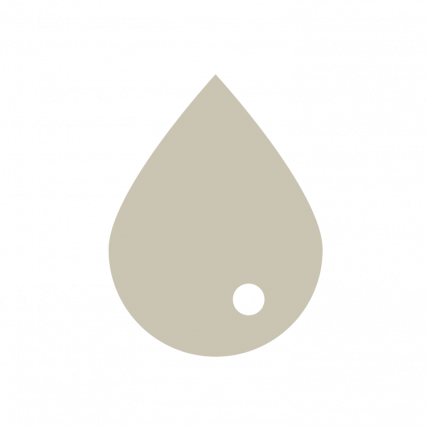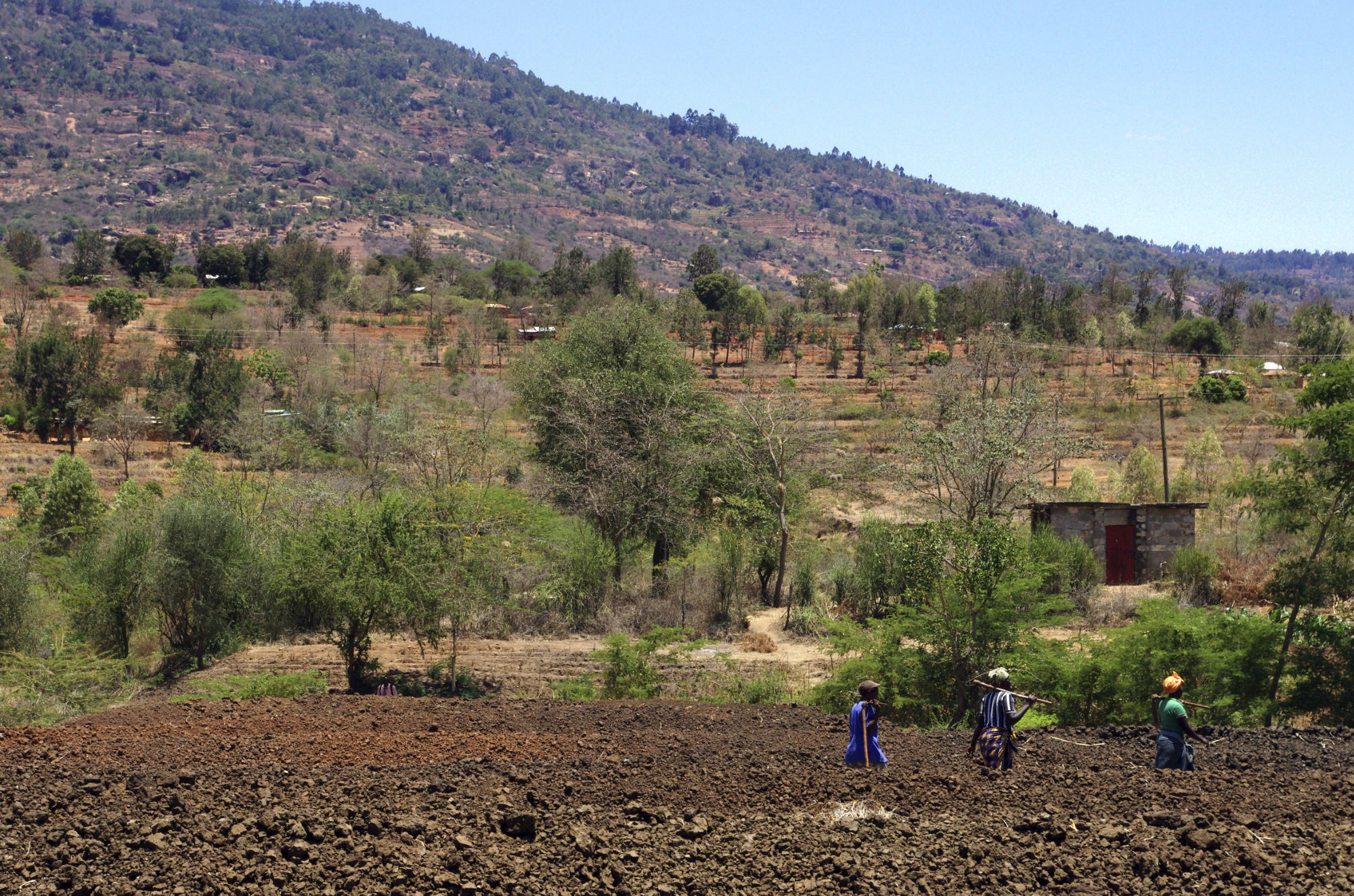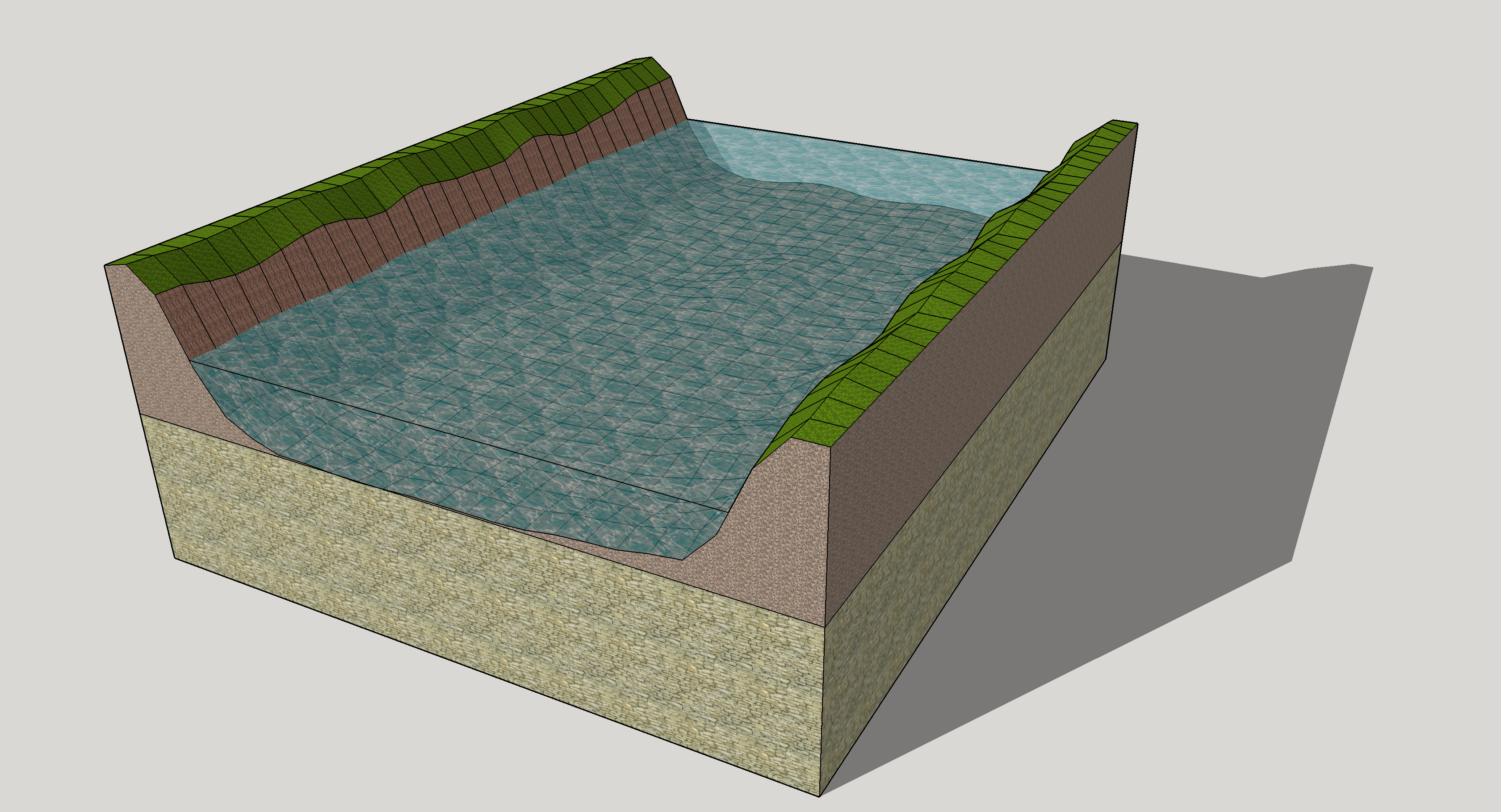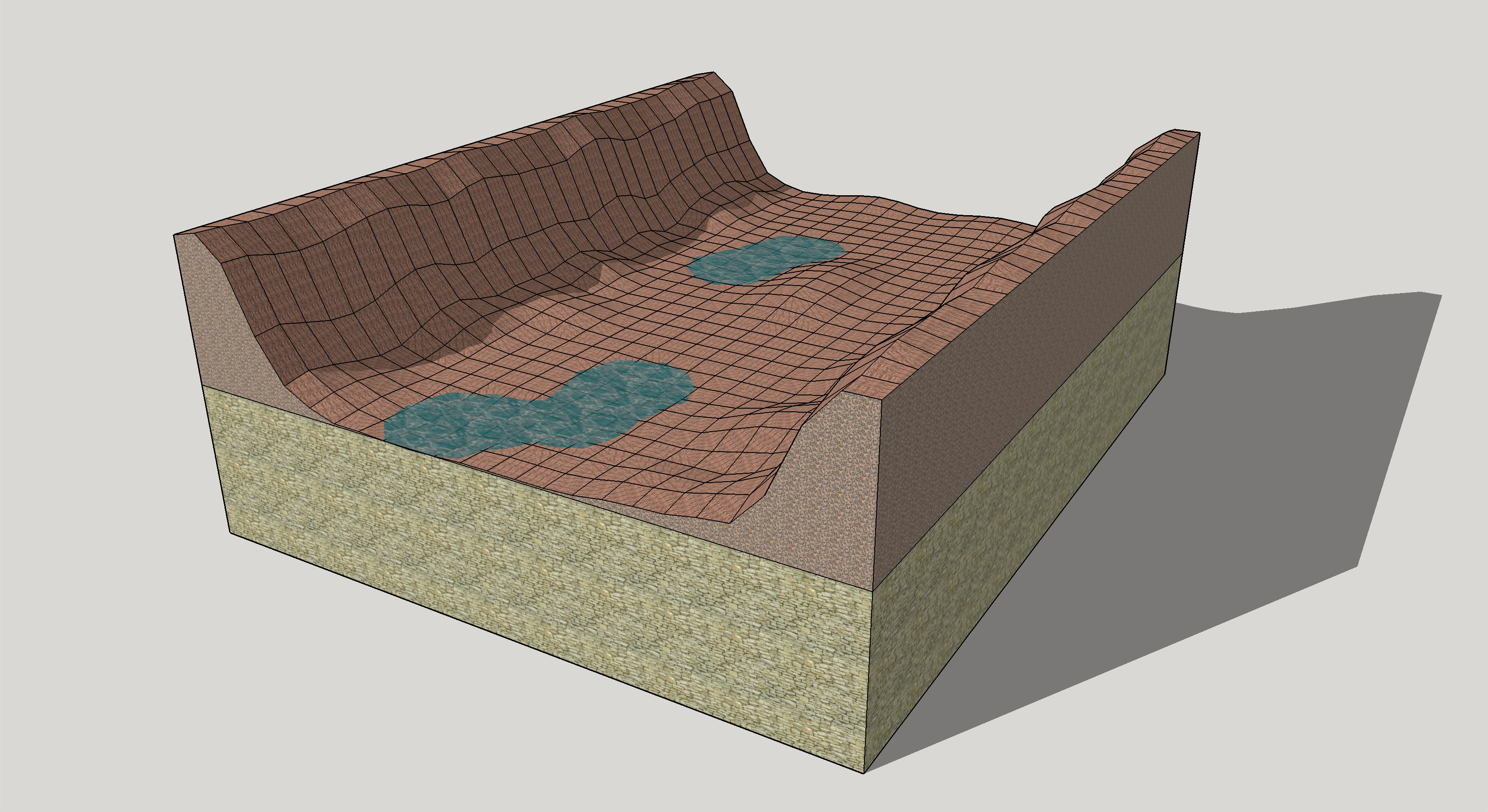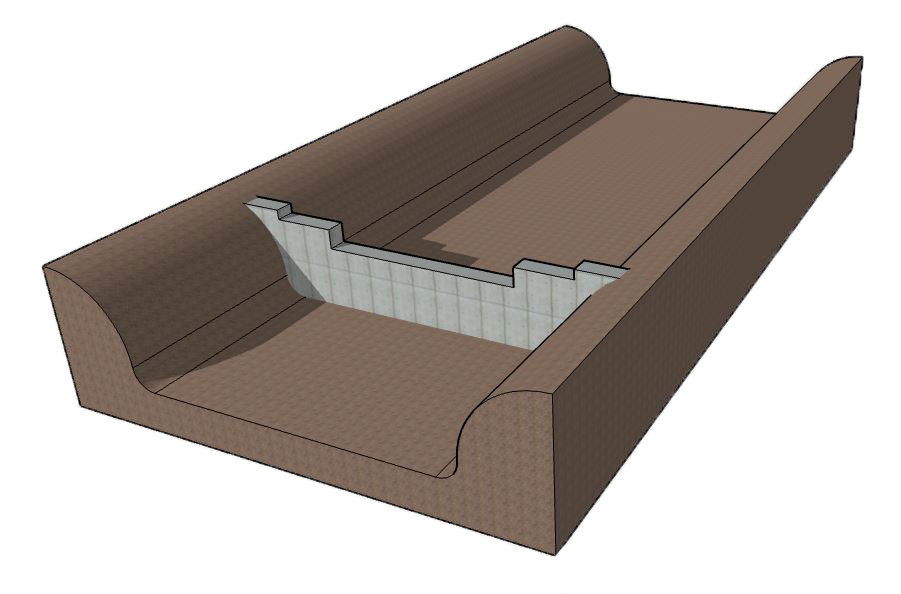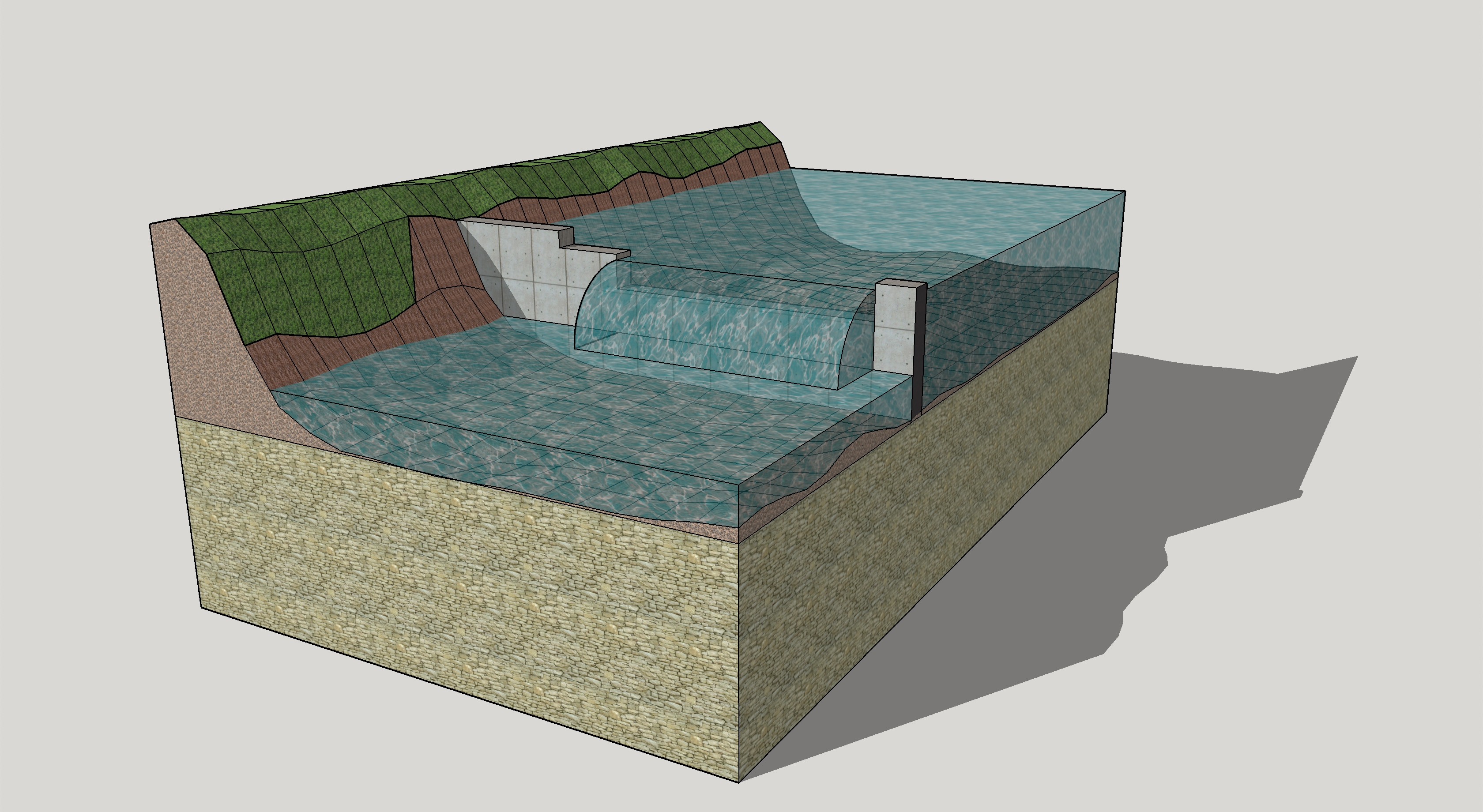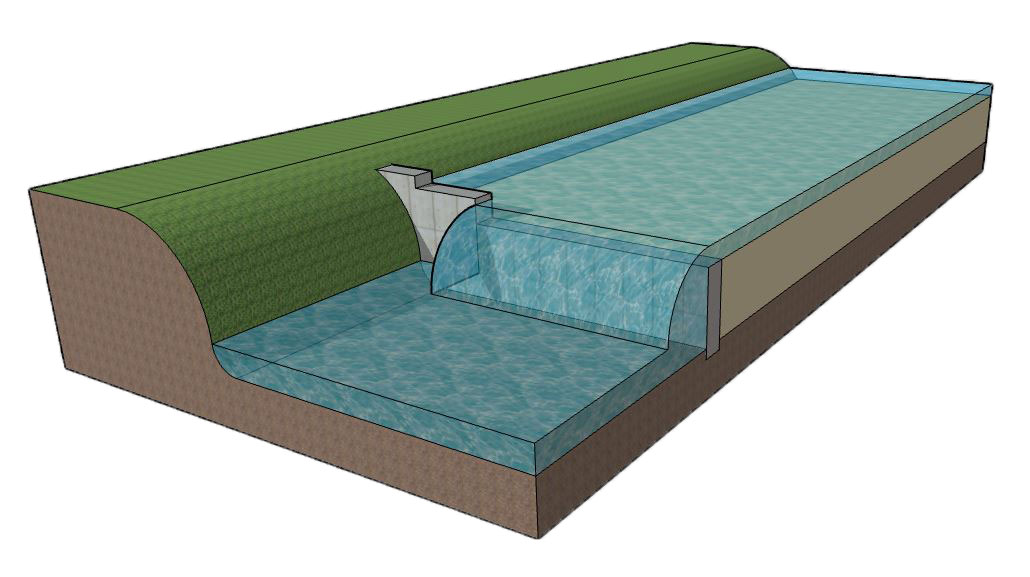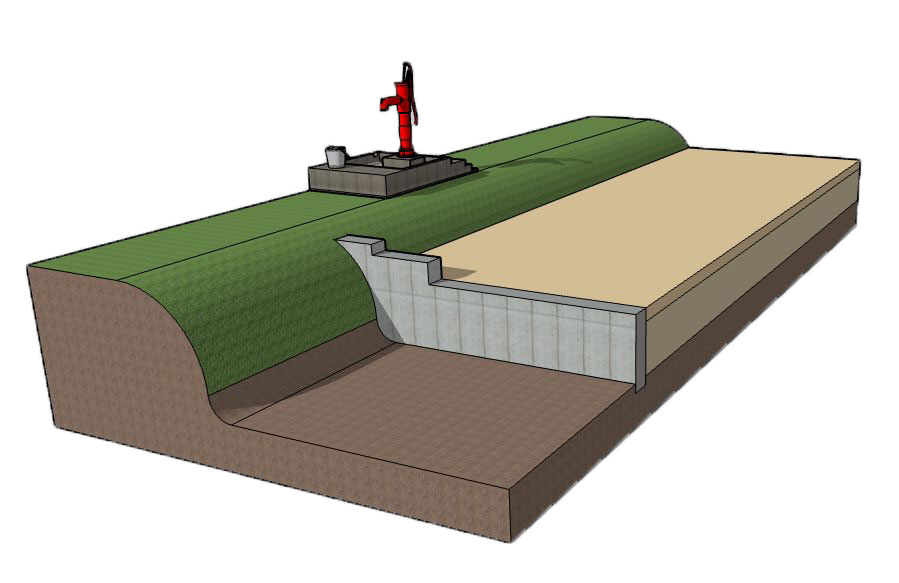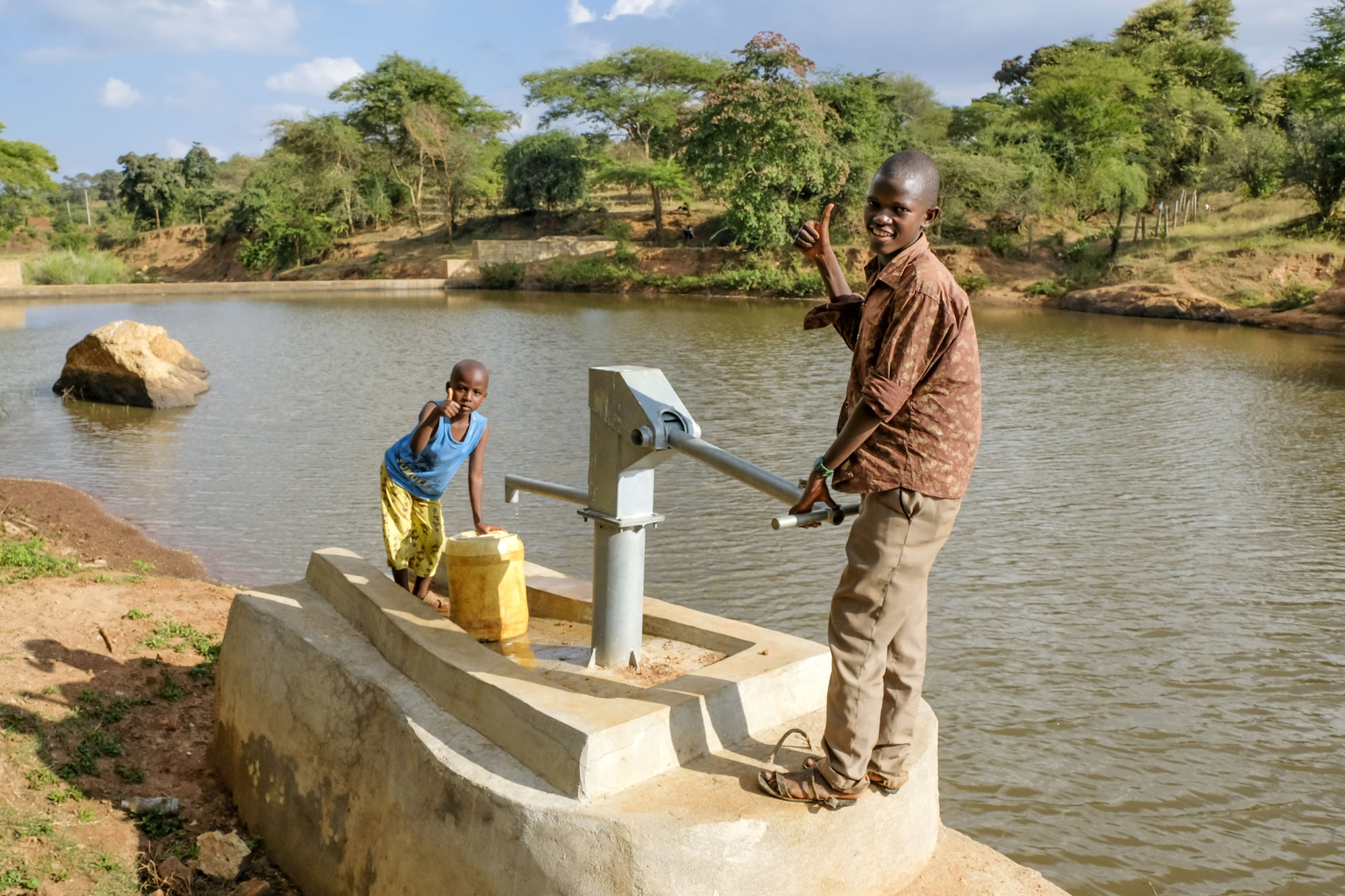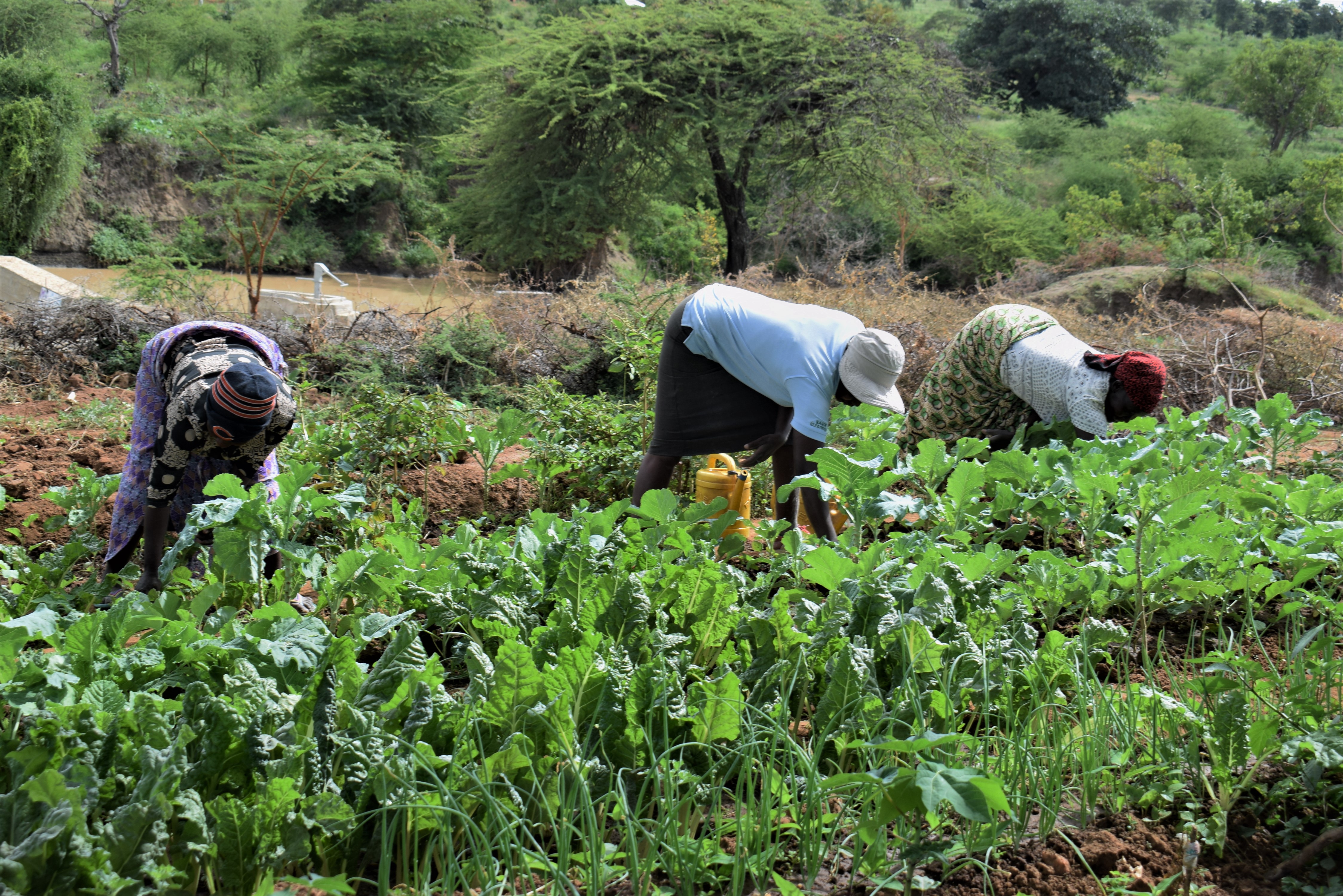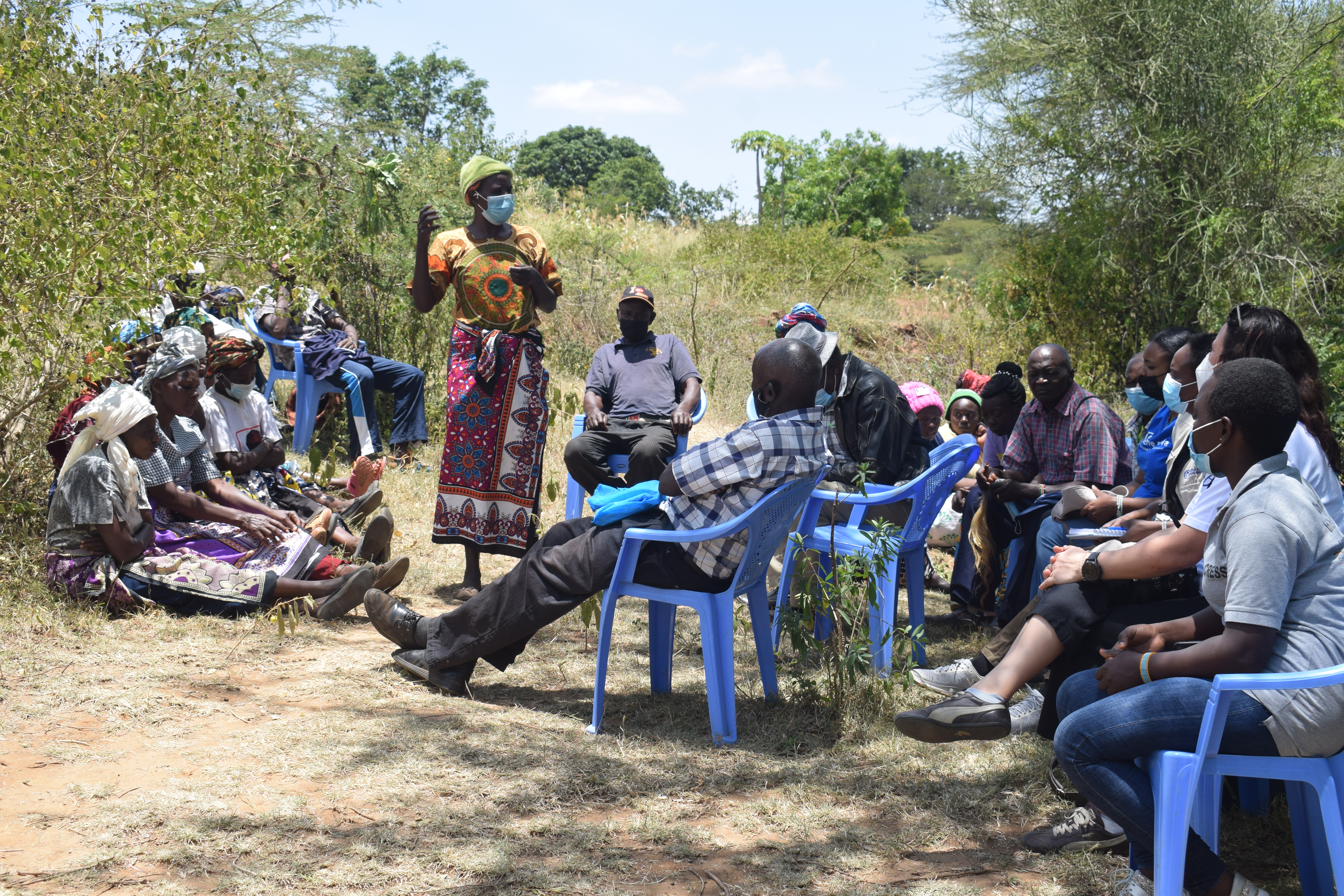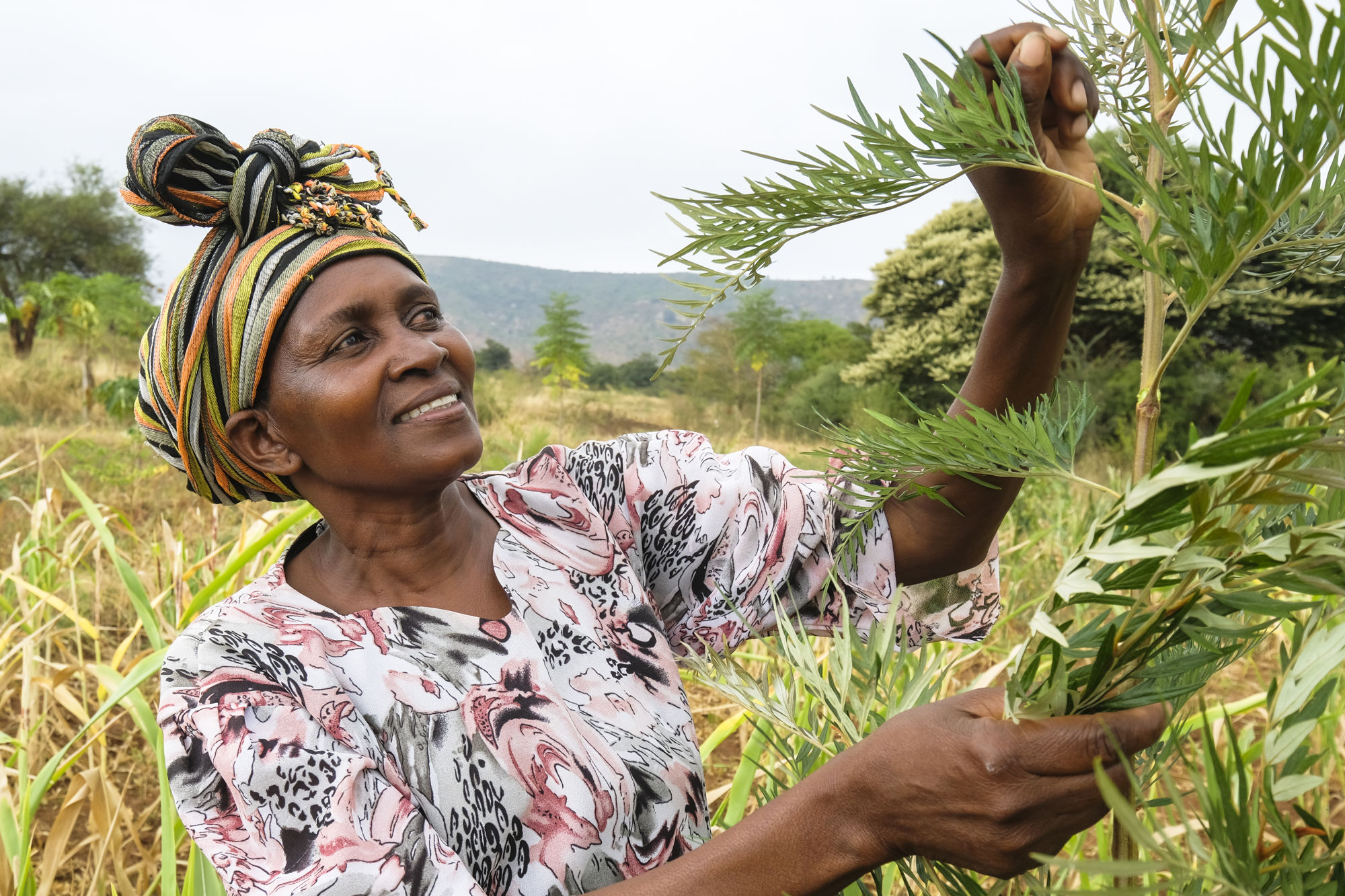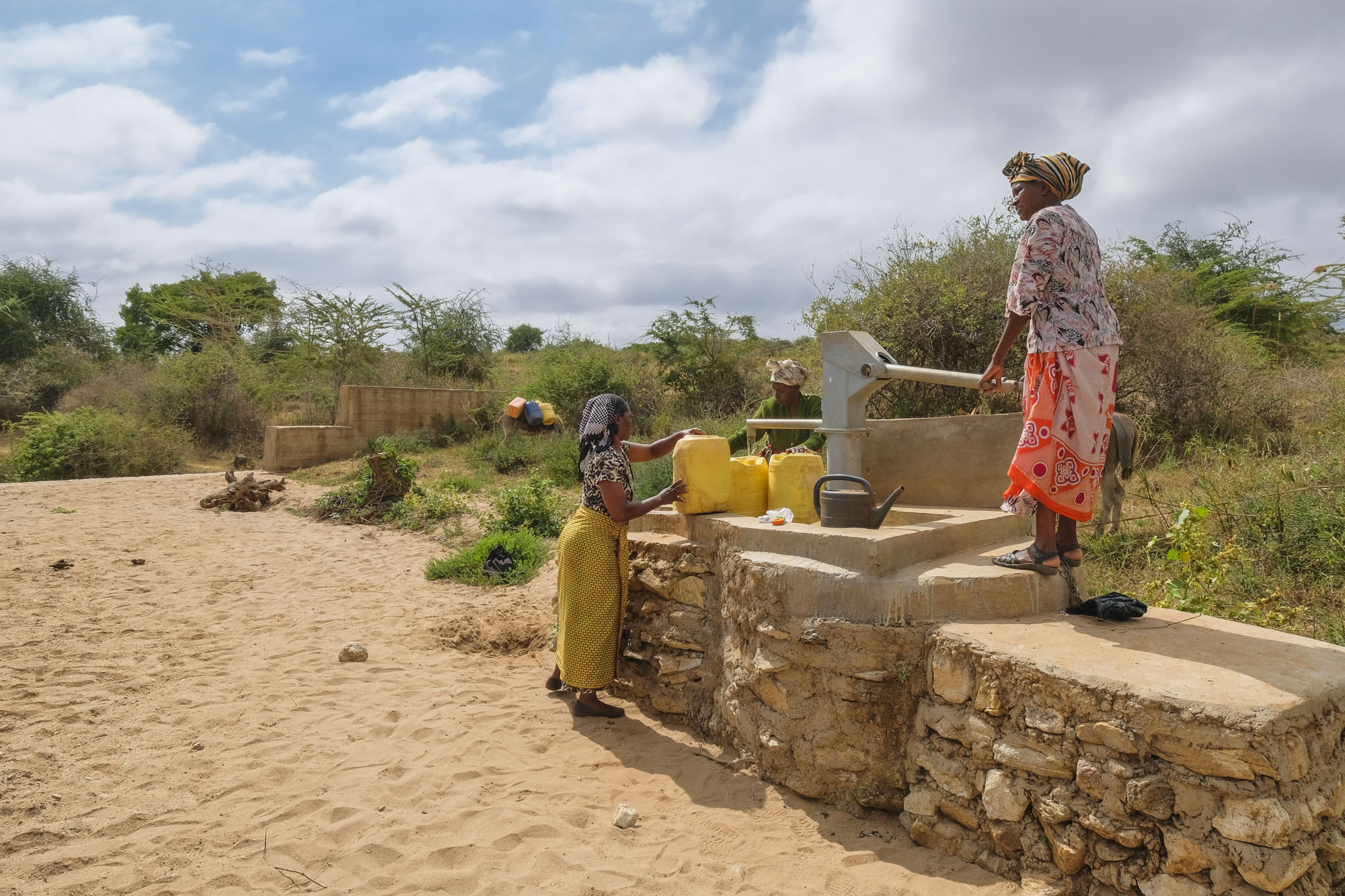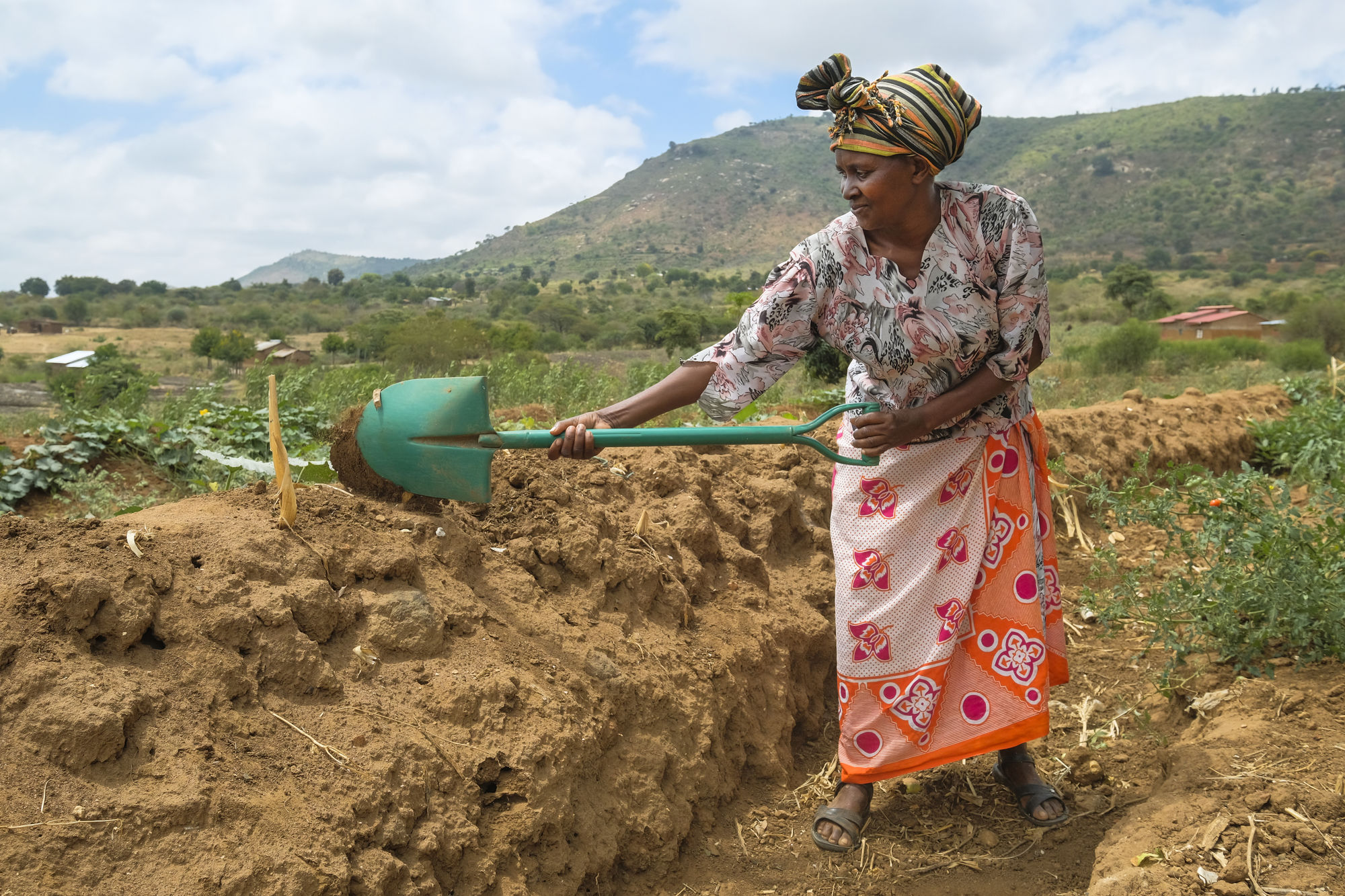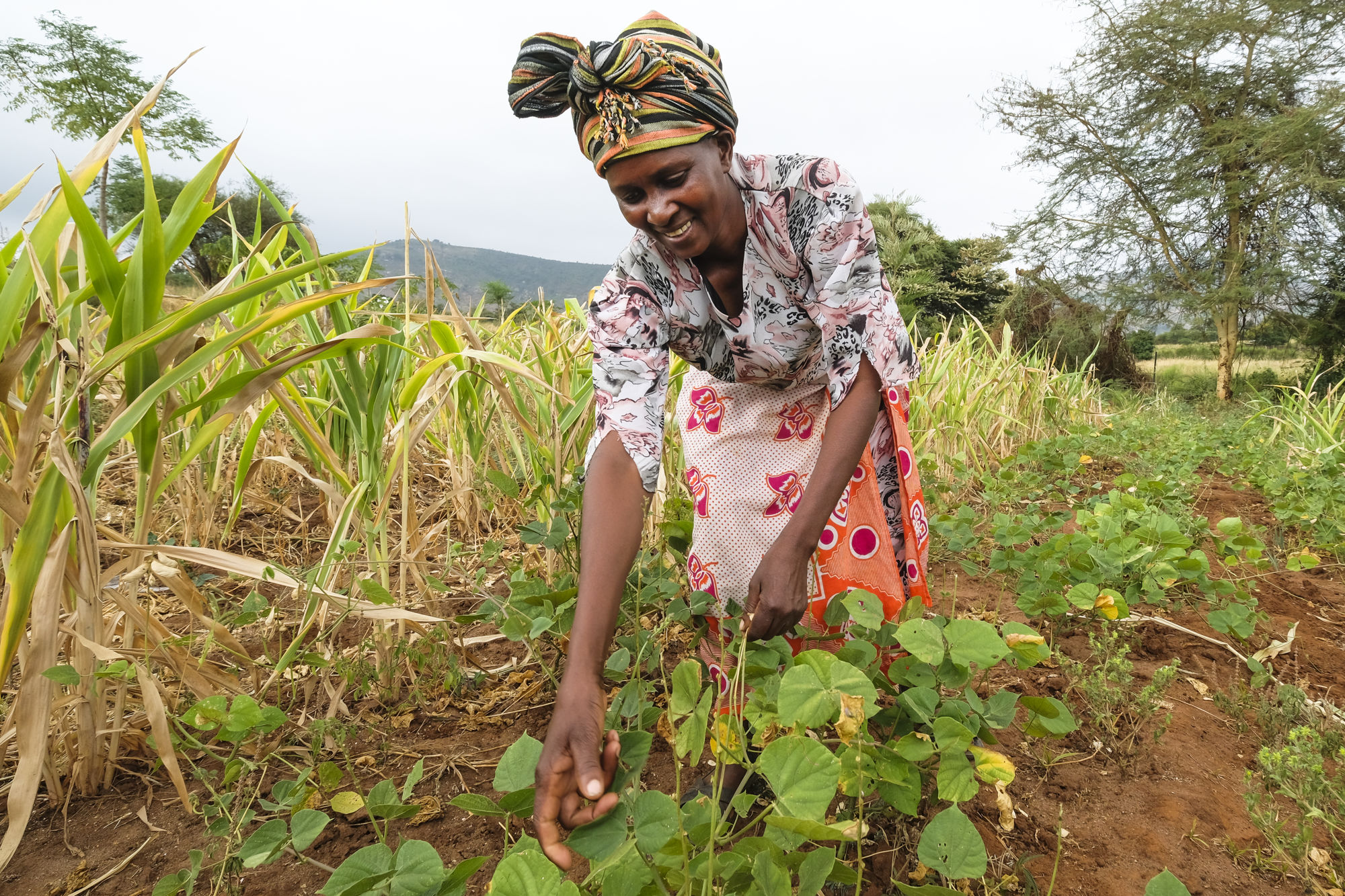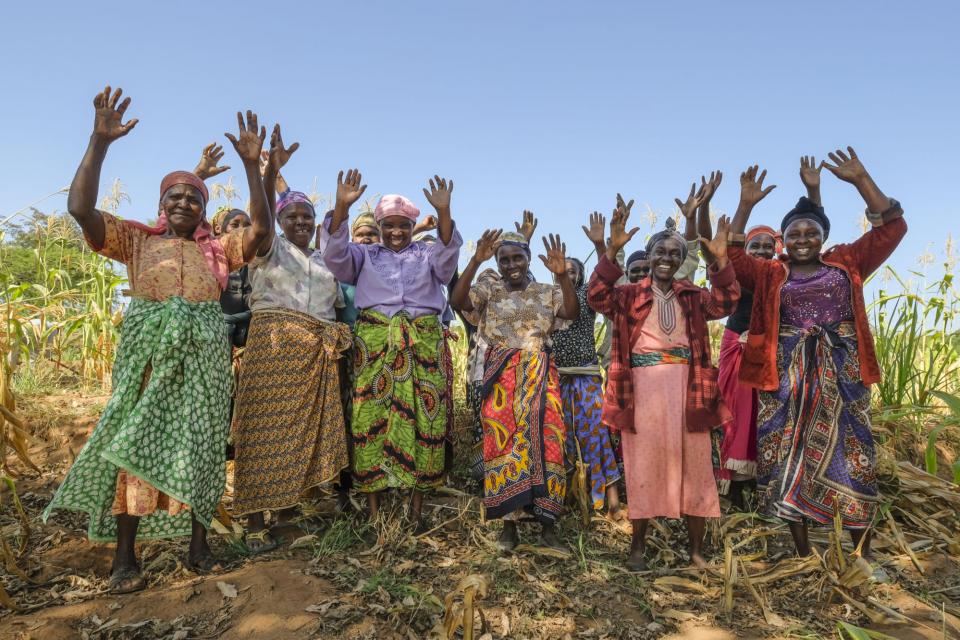
The districts of Makueni, Machakos and Kitui in South Eastern Kenya are among the areas struggling with weak infrastructure, poverty and extreme weather conditions. Only two short but heavy rainy seasons provide rainfall and thus irrigation for the fields. But the insufficient rainfall leads to dried up rivers after a few weeks as the water sips and washes away quickly. As a result, farmers can only produce a small yield from their fields due to the insufficient rains and also have to walk long distances to get their drinking water. There is no hope of improvement - on the contrary. Climate change is exacerbating the situation because the rainy seasons are becoming shorter and shorter and the total amount of rainfall is decreasing. As a result, farmers are increasingly unable to meet their own needs. These three districts are considered a food deficit region, where majority live in poverty and are dependent on food distributions.
arche noVa's second project area is located in Laikipia County, which is particularly sparsely populated and has little development. Here, too, people have to travel long distances to obtain drinking water. The situation is exacerbated during periods of long acute drought, as was recently the case in spring 2022. In view of the enormous need for aid, our local partner organization supported the communities with water by tanker.
Defying climate change, strengthening resilience
Our project aims to improve the adaptive capacities of these communities to climate change, by implementing projects aimed enabling them to be more resilient and respond constructively to climate change, to provide for themselves and to develop income opportunities. In order for this to succeed, the local people themselves play a decisive role in our project from the very beginning by being actively involved in every step of the process. This is because construction and support is only provided where the villagers have already taken the initiative and founded a self-help group. Our contacts are local partner organizations Africa Sand Dam Foundation (ASDF) and Laikipia Permaculture Trust (LPCT), who develop the project activities and implement them together with the self-help groups.
Janet's story
Sand dams secure the water supply in the long term
The linchpin in our project villages is the construction of sand dams, which secure the water supply in the long term. The sand dams are concerete walls constructed along seasonal river channels. The construction works according to a simple principle: the dam holds back the sand and becomes a water reservoir and extracted through shallow wells which are constructed alongside the concrete wall. The people and their livestock benefit from this. At the same time, the groundwater storage layer is stabilized, which allows the trees and shrubs to grow more vigorously and leads to better yields in the fields.
Teamwork on construction sites
The construction work is carried out by the self-help groups who are the direct beneficiaries and are closely supported by our partner organizations who provide skilled labour and technical expertise during the construction process. Cooperation begins at the planning stage. The self-help groups receive construction plans, training, logistical support, tools and some of the building materials such as cement, steel and wood. Sand, gravel and stone, on the other hand, are provided by the self-help groups. They spend time collecting and procuring the necessary quantities. Then construction begins under the guidance of experts from the partner organizations.
First, the bedrock is excavated and a concrete wall is anchored. This wall is the actual dam and is designed in stages to be able to cope with floods of varying intensity while still allowing sufficient water to pass through for the communities downstream. Over the course of three rainy seasons, a shallow sandy plain forms upstream of the dams, which serves as a storage medium and prevents the water from evaporating as it would in an open reservoir. Water is conveniently drawn directly next to the dams using a hand pump at the shallow well.
Even more water thanks to solar pumps
Where large sand dams are constructed, Solar pumps are installed at individual locations to pump the water from the sand reservoir into a water system. This expansion is taking place in villages that are located so far above the river courses that the path to a hand pump is too long or difficult. The green energy solution rounds off the climate-adapted measures.
The following applies to all villages: during the project, water committees are established and trained, which are responsible for maintaining and operating the new systems. Through the county government, the sand dams are also licensed according to the Water Resources Authority requirements.
Other water supply activities include the construction of rock catchment basins and water storage tanks at schools.
Donate for this project
Strengthening positive effects through cooperation
The many years of experience of our local partner organization ASDF proves this: Where sand dams are created, there is sufficient water, people save time fetching water, new arable land is created, crops thrive better, new trees can be planted and: the microclimate improves. We are specifically strengthening these positive effects in our project by combining the know-how of two local partner organizations: ASDF contributes its expertise in water supply and mobilization of self-help groups and LPCT its expertise in sustainable agriculture and land regeneration.
Planting trees, improving harvests, generating income
The communities are also introduced agroforestry to tree planting through establishment of tree and crop nurseries near the sand dams. These are important steps against increasing desertification and widespread erosion in the region. Planting is therefore part of disaster prevention.
Further improvements are being made to agriculture. During our project, smallholder farmers learn how to build terraces on their fields and combat erosion. They receive drought-resistant seeds and training in sustainable farming methods and permaculture. They also receive support in raising chickens and goats. Equipped in this way, people can provide for themselves better and also open up new income opportunities. So far, this has been extremely difficult, especially for young people in the region. Many young people see their future in migration to the cities. Our project therefore explicitly includes this target group. Young people receive training in poultry farming, horticulture and business management.
The future prospects promoted by the project also include the production of cosmetic products such as soaps or shampoo, which are marketed directly on site. The cultivation of aloe secondiflora is also being promoted, a drought tolerant crop which grows in Laikipia require little water. Through the local partner LPCT, the communities have secured permits from Kenya Wildlife Service to grow commercially. The project also produces and sells soap made from goat's milk. The first bars of soap can already be found in hotel rooms in the region, an important step for the development of further marketing opportunities. Market linkages for the aloe secondiflora leaves has been done to international markets where the groups receive royalties.
In order to reduce deforestation and emissions, ASDF specifically promotes the use of energy-efficient stoves. To this end, volunteers are being trained to carry out training courses in the communities. They will explain how to build better stoves or seal existing ones. In this way, each individual family saves charcoal and firewood and carbon dioxide emissions are reduced.
Strengthening resilience and mitigating risks
Our project focuses on sustainability and resilience. What has proven successful at individual locations is communicated as best practice within the network. arche noVa specifically promotes networking between civil society actors and communication between our partner organizations and local official structures.
The most important actors in reducing the risks of disasters are the local communities. In addition to other dangers, they have to face up to the effects of climate change in particular. The better their information base, the better they can do this. As part of our project, the communities have been trained on Community Managed Disaster Risk Reduction (CMDRR) and carry out mapping activities to identify the natural risks on a site-specific basis.
Where exactly and to what extent flooding, erosion, loss of livestock, persistent drought and crop failures threaten the individual villages is something that many communities are not yet fully aware of. Added to this is the overuse of natural resources and the unsustainable cultivation of agricultural land. All of this is discussed in training sessions with the communities and adaptation measures are derived from this. Finally, each community should have disaster prevention strategies, early warning systems and emergency plans in place and embark on the path towards sustainable management of natural resources.
Previous projects have already achieved a lot
arche noVa has been active in Kenya since 2012. A number of self-help groups have already been supported. Over 80 sand dams have been built. Rock catchment basins have also been built to collect and store rainwater run-off from rock formations. Piping systems, water tanks and distribution points were built at many of the sites.
The locations also included schools, where we built rainwater storage tanks for the water supply together with ASDF. Last but not least, hygiene education has played an important role in our country program from the very beginning. In 2020, these activities were intensified in the course of Covid-19 prevention.
Project Overview
Securing drinking water supply and nutrition, as well as creation of income sources to fight the poverty in arid and semi-arid regions of Machakos, Makueni, Kitui, Laikipia
7,590 people
- Construction of sand dams, rock catchments and school water tanks
- Installation of hand pumps and solar pumps
- Establishment and training of water committees
- Water quality tests
- Training on sanitation and hygiene promotion
- Training on climate-adapted agriculture, agroforestry, marketing of products
- Building terraces on farms
- Establishment of vegetable gardens
- Distribution of drought-tolerant crop varieties (seeds) and tools
- Reforestation and establishment of tree nurseries
- Introduction of irrigation technology
- Promotion of small animal husbandry
- Training young people in horticulture, farm management, poultry production
- Training in soil and water conservation
- Development of disaster prevention structures
- Africa Sand Dam Foundation (ASDF)
- Laikipia Permaculture Centre Trust (LPCT)
- Aktion Deutschland Hilft
- Federal Ministry for Economic Cooperation and Development
- Donors

